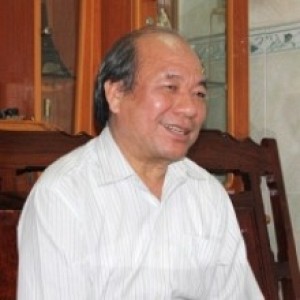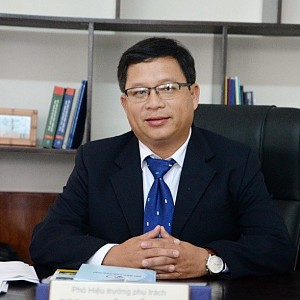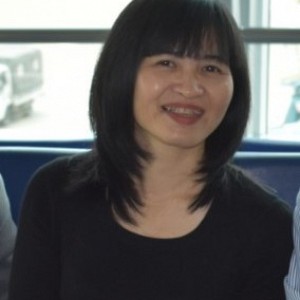Search Papers
5 papers
RETURN MIGRATION OF VIETNAMESE FROM CAMBODIA: A HISTORICAL PERSPECTIVE
Vu Thi Thu Thanh
DOI: tdmu.EJS/2024.03.595
Over several decades, a combination of historical, economic, and political factors have influenced the multifaceted phenomenon of Vietnamese return migration from Cambodia. This article examines the return migration of Vietnamese from a historical perspective with document and contextual analysis, revealing a broader picture of the socio-economic and political dynamics in Cambodia and the historical relationship between Cambodia and Vietnam. Before the 1990s, return migration was significantly influenced by colonial-era migration policies and pervasive anti-Vietnamese sentiments. These factors led to violent repression and forced evictions under regimes such as Lon Nol and the Khmer Rouge, profoundly impacting the Vietnamese community in Cambodia. In contrast, administrative governance and economic factors have become the key determinants of Vietnamese return migration in the contemporary period. Understanding the underlying causes and mechanisms that create the situation for Vietnamese in Cambodia and their return is crucial, serving as a basis for addressing their current challenges and promoting their social integration in both countries.
DESIGN STAMPING MACHINE FOR DOCUMENTS
Ngo Bao, Tran Thi Vinh
This article's primary goals are to provide design drawings, a description of the
structure, an explanation of the working principle, and a kinematics calculation for text
stamping machines. This machine has an electric motor, a gear-pinion transmission, a
rotating disc-rod-slider mechanism and a hinged four-way mechanism. This is a simple,
reasonably priced and useful device for administrative agencies' workstations. An
ordinary administrative worker can also operate it. This device is about the same size
as a laptop or printer.
It operates by clamping the seal, stamping constantly onto A4 pages. The stamping
speed can also be changed by varying the shaft speed of the electric motor. It is
convenient, but it also has the disadvantage of requiring someone to put the paper in
and take it out.
The box frame of this machine is made of plastic or wood. Some transmission
components are made of steel. When this machine works, the force applied to it and the
force caused by it are very small, so in general it is very simple and safe.
Keywords: Gear transmission – rack, rotating disc mechanism – connecting rod –
slider, four-hinged mechanism, stamping machine.
Binh Duong: Learning about the historical and cultural significance of the area's prehistoric past and its geography
Pham Van Thinh
Binh Duong is a province in the Southeast region. It has a long history of growth and numerous noteworthy historical and cultural values. This paper provides a summary of the cultural and historical significance of Binh Duong Province during the prehistoric, land exploration, and settlement phases. It discusses population, administrative structure, social structure, economic traits (agriculture, handicrafts, commerce), and social culture throughout the various eras (prehistory, settlement phase, Nguyen dynasty). The findings demonstrate that Binh Duong not only has a rich history with numerous economic and cultural assets, but also point to possible research avenues for safeguarding and advancing moral principles in the construction and development of Binh Duong province today and in the future.
Southeast Viet Nam - Overview of administrative boundaries in the past and present
Nguyen Van Hiep - Pham Van Thinh
The Southeast region, in prehistory and protohistory, established the space of Dong Nai archeological culture. Since the 16th to 17th centuries, the Southeast had been discovered by the Vietnamese people, in which they established sovereignty and administrative structure. Over three centuries of formation and development, the Southeast region has created many changes in geographic names and administrative structures as required by the historical context of each period. This article presents the overview of the administrative restructuring process in the Southeast region in some important historical milestones during the development process hereof. With the presentation of administrative structures in the Southeast region, the article contributes to systemizing the historical periods of formation and development of the region. It also opens further dialogues for the study of historical and cultural characteristics of the Southeast region.
The followers of Caodaism in foreign countries and the administrative relation between believers of Caodaism in foreign countries and Cao Dai church in country
Huynh Ngoc Thu, Le Thi My Ha
Caodaism was established in the South in 1926. It has been considered as one of indigenous religions in Vietnam in the first half of 20th century. In the first days, trend of Caodaism was to develop in foreign countries through missionary campaigns. Cao Dai’s dignitaries carried out missionary task in Cambodia, France, German, China… That was why followers of Cao Dai (Cao Dai followers) lived in these countries in the early 1930s. After 1975 many people in the South emigrated to America, Australia. Many of them were Cao Dai followers. After their lives have been stabilized, they have gathered to build temples so Caodaism in foreign countries has developed strongly. The number of believers in foreign countries is about 50,000 believers. They have created connection with Cao Dai sects through many forms. In this article we mention three main contents: 1) Cao Dai followers in foreign countries: the process of establishment and development after 1975; 2) The administrative relation between Cao Dai followers in foreign countries and Cao Dai church in Vietnam; 3) Some remarks on the administrative relation. The information in this article has been completed with two research methods: in-depth interview and participate observation.
Publication Information
Publisher
Thu Dau Mot University, Viet Nam
Honorary Editor-in-Chief and Chairman of the Editorial Board

Assoc. Prof. Nguyen Van Hiep
Deputy Editor-in-Chief

PhD. Trần Hạnh Minh Phương
Thu Dau Mot University
Thu Dau Mot University
Editorial Board

Prof. Tran Van Doan
Fujen University, Taiwan
Fujen University, Taiwan

Prof. Zafar Uddin Ahmed
Vietnam National University Ho Chi Minh City
Vietnam National University Ho Chi Minh City

Prof.Dr. Phillip G.Cerny
The University of Manchester, United Kingdom
The University of Manchester, United Kingdom

Prof. Ngo Van Le
University of Social Sciences and Humanities (VNU-HCM)
University of Social Sciences and Humanities (VNU-HCM)

Prof. Bui The Cuong
Southern Institute of Social Sciences
Southern Institute of Social Sciences

Prof. Le Quang Tri
Can Tho University
Can Tho University

Assoc. Prof. Nguyen Van Duc
Animal Husbandry Association of Vietnam
Animal Husbandry Association of Vietnam

Assoc. Prof. Ted Yuchung Liu
National Pingtung University, Taiwan
National Pingtung University, Taiwan

PhD. Anita Doraisami
Economics Monash University, Australia
Economics Monash University, Australia

Prof. Dr. Andrew Seddon
Asia Pacific University of Technology & innovation (APU)
Asia Pacific University of Technology & innovation (APU)

Assoc. Prof. Le Tuan Anh
Thu Dau Mot University
Thu Dau Mot University

Prof. Abtar Darshan Singh
Asia Pacific University, Malaysia
Asia Pacific University, Malaysia

Prof.Dr. Ron W.Edwards
The University of Melbourne, Australia
The University of Melbourne, Australia

Assoc. Prof. Hoang Xuan Nien
Thu Dau Mot University
Thu Dau Mot University

PhD. Nguyen Duc Nghia
Vietnam National University Ho Chi Minh City
Vietnam National University Ho Chi Minh City

PhD. Bao Dat
Monash University (Australia)
Monash University (Australia)

PhD. Raqib Chowdhury
Monash University (Australia)
Monash University (Australia)

PhD. Nguyen Hoang Tuan
Thu Dau Mot University
Thu Dau Mot University

PhD. Nguyen Thi Lien Thuong
Thu Dau Mot University
Thu Dau Mot University
Assistant

Nguyen Thi Man
Thu Dau Mot University
Thu Dau Mot University

